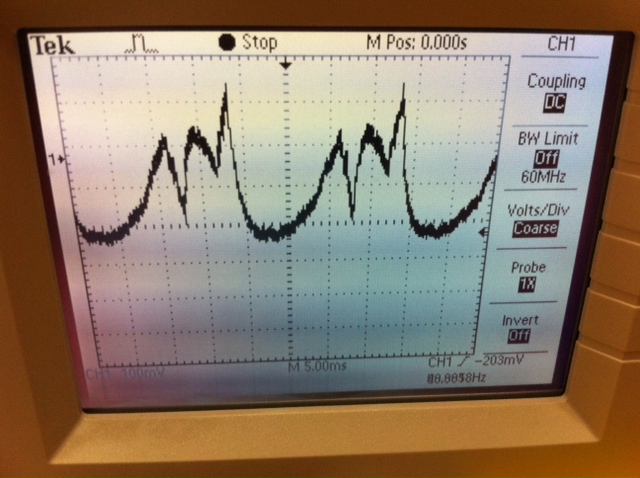MrDropsy please avoid PM for questions, mostly because you'll get faster answers through normal forum posts than on PM as the potential audience is wider.
I'm a noob myself, so please validate everything I say either with somebody else on the forum or with other sources: don't take my words as those coming from an expert because I'm not.
Now back to your questions and circuit: first of all please make a diagram of what you have so far so that we can talk of something more real than just thin air.
Second, the amplifier gain, assuming we are talking of an inverting amplifier configuration, is determined by the ratio of two resistors: the one on the feedback connection (from the opamp output back into the negative input) and the one on the negative input.
I believe a little bit of basic knowledge about opamps would help you here, so these are the two rules about an ideal op amp (real op amps do their best to match the ideal op amp)
- no current flows out of an opamp
- the op amp output will do it's best to make it's inputs to be equal in voltage
When selecting an opamp you have a lot of considerations to do, one being the supply voltage.
Every op amp will need some voltage supply in order to drive the output. When an opamp is classified as "single supply" that means it can usually be powered by 5V. When such characteristic is missing from the opamp description it means we are talking of "dual supply" opamps, which require 12-15V. Usually, when talking about Arduino, you want to stay within the 5V range, so pick a single supply one.
Another opamp characteristic is its capability to have the output going close to it's supply (speaking of voltage here). So assuming we are talking about a single supply opamp (5V) we talk about a rail-to-rail opamp when the opamp output is capable to go very close to the supply voltage. usually it's easier it goes very close to the positive voltage and a little less close to the negative voltage (or ground).
So, I assume you need an opamp that swings it's output between 0V and 5V while being supplied 0V and 5V: this is a single supply rail-to-rail opamp, like the MCP60x opamp family somebody else was suggesting (http://ww1.microchip.com/downloads/en/DeviceDoc/21314g.pdf).
Now, please, draw a schematic of your circuit naming your components and providing values so we can discuss the specifics.




